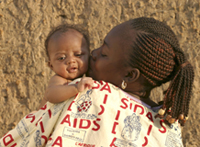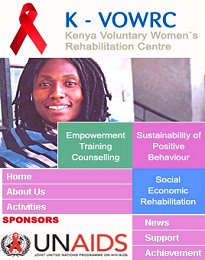How one woman’s crusade is making a difference in Kenya
When rural girls and young women move to Kenya’s capital city, Nairobi, in search of a better life, not all of them find it. Faced with limited educational training and the difficulties of earning a living—some end up as sex workers and at risk for HIV.
Professor Elizabeth Ngugi, a nurse by training, has been looking out for these young women since 1992 when she founded the Kenya Voluntary Women Rehabilitation Centre (KVOWRC). The center reaches out to sex workers in the slums of Nairobi who are looking for a better life.
The center offers skills training and has a micro finance programme. Graduates of KVOWRC are now running small business. Professor Ngugi says by providing these services she and her team are helping young women re-build their self-esteem and make positive changes in their lives. “Every human being has a right to exploit their potential to the full. The world has the obligation to give vulnerable women and children a chance,” she says.
In the city where number of children aged between 10 and 18 involved in sex work is increasing at an alarming rate, KVOWRC also focuses on HIV education and prevention, peer counseling and home based care for those who need it.
For the younger girls, many of whom are teenage mothers, the centre also provides a home and pays for school fees so they can complete their education. The centre also offers vocational training programs in tailoring, dressmaking, weaving, and tie and dye hairdressing, which are boosting their income and empowering them to abandon risky behavior. Most of the girls who come to the centre choose not to go back to the streets.
For one graduate it took a hairdressing course and a hair dryer to turn her life around. “It was not easy for me to get a job because I had no experience” she says. “Thanks to the KVOWRC training, I opened a small beauty salon, and am now able to pay my rent and buy food and clothing for myself and my two children.”
Related links
KVOWRC website: www.kvowrc.or.ke





